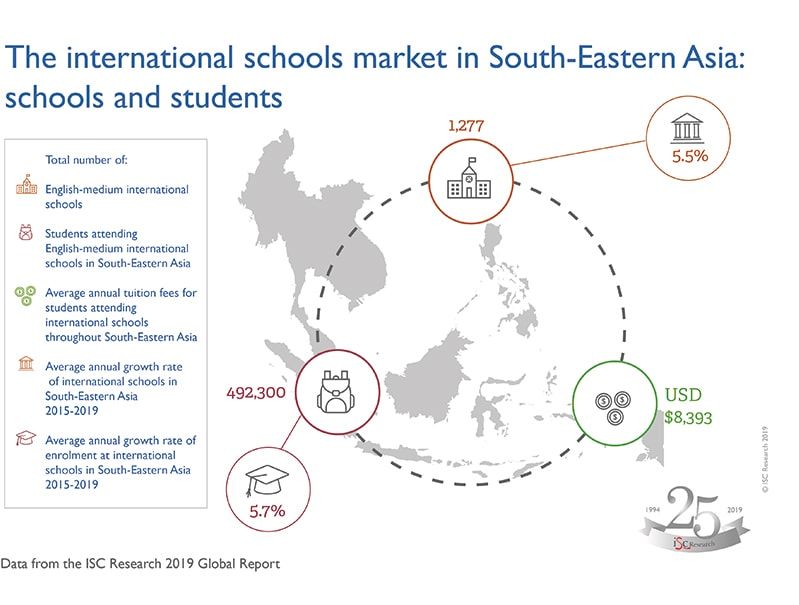International education expands and so do the opportunities for education suppliers
Published
Thursday, 22 August
Author
Mark Rosser
Categories
Share
5.6 million children aged between 3 and 18 are now attending English-medium international schools around the world. The demand for international education has been growing significantly for several years and looks set to continue.
According to ISC Research, 19 years ago (in the year 2000), there were just 969,000 children attending international schools. They were primarily western expatriate children attending American Schools Overseas and British International Schools. The number of international schools has increased more than fourfold since then, from 2,584 to 10,937, they have broadened in type and orientation, and they are full of children from all countries including a significant proportion of local children whose parents want them to receive an international education.
Information about the latest trends and growth potential within the world’s English-medium international schools market are highlighted in the new ISC Research Global Opportunities Report on the international schools market which has just been released.
The report informs education suppliers, as well as schools, universities and investors, of the current state and future projections of the world’s international schools market. It analyses trends by key regions, sub-regions and countries. The data, which is combined with crucial market intelligence, identifies gaps in the market making it particularly valuable for market understanding and strategic planning.
Some facts from the new report:
- 22 new international schools have opened in the United Arab Emirates in the past two years. Most of the recent development has been in the mid-market sector where annual school fees are more affordable to a wider range of parents. Growing competition within this mid-market sector means that standards and education provision must remain high.
- In China, where international schools accessible to expatriate children are segmented from those that Chinese nationals can attend, it is the schools for local Chinese children that have experienced most growth. Today 359,300 children in China attend the 884 international schools there and 66% of them are Chinese nationals. These schools have very high school fees and require extensive facilities, education services, teacher training and standards to justify the cost.
- Malaysia now has 283 international schools and is expected to see more school development in the near future as a result of several areas, including Ipoh and the Klang District experiencing industrial and residential growth.
- Japan is also expected to see growth in its international school sector because of new immigration laws and confidence in its market which is encouraging an influx of expatriates.
- School fees vary significantly by country. In China, the average annual fees for a child to attend an international school are currently USD $15,726. In the UAE the average annual fees are $8,073, in Malaysia, $6,395, and in Japan $10,943.
- Looking to the future, the Global Opportunities Report projects that Eastern Asia will almost double its number of international schools in the next ten years and increase its student enrolment to 1,225,000. By 2029, South-Eastern Asia is projected to reach 851,000 students attending international schools, and 2.5 million students in Western Asia.
As more parents realise the international school options accessible to them, so demand will continue to rise and opportunities for more education suppliers and specialist providers will increase.
The Global Opportunities Report is the latest market report from ISC Research. The company has been producing data and providing trends, intelligence and expertise on the world’s English-medium international schools market since 1994 and is celebrating our 25 year anniversary this year. For education suppliers, our support includes our online data platform (ISC Online) and a range of specialist reports including the China Education Suppliers Report which was released earlier this month. If you’d like more information about how ISC Research can help your business develop internationally, contact diane.glass@iscresearch.com
